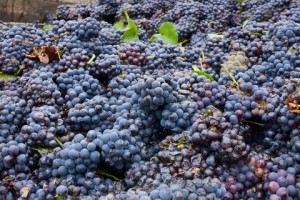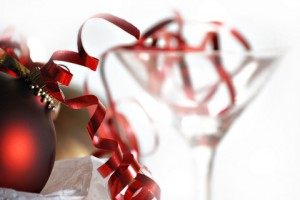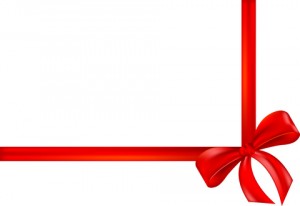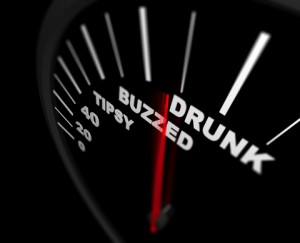by Lorri | Jan 12, 2011 | UnCorked
 Wine aeration and decanting are two important steps in wine enjoyment, and unfortunately, the terms are sometimes confused as being interchangeable.
Wine aeration and decanting are two important steps in wine enjoyment, and unfortunately, the terms are sometimes confused as being interchangeable.
Aeration is the exposure of wine to air. Aeration occurs throughout the winemaking process and is controlled from fermentation to bottling.
Decanting is exactly what it sounds like: the process of transferring wine from its bottle to another container. Decanting is most often employed to separate the sediment of an aged wine before drinking it. Many contend aeration is a crucial step in the decanting process, promoting the wine’s developing aromas, flavors and finish.
Professor Emile Peynaud (1912-2004), world-renowned scientist, taster and teacher, argued that oxygen coming in contact with a sound wine does more harm than good. According to his theory, the longer the wine was aerated during decanting the more diffuse its aromas and less marked its sensory attributes. He advised to only decant wines with sediment and only just before serving. This is because the moment wine is fully exposed to air as it is poured, some of its sensory impressions may be lost and pouring just prior to serving gives the taster maximum control.
This theory is easily proven in fragile, fully developed 20-to 30-year-old wines. Many of these wines are so delicate they can only withstand minutes in a glass before giving in to the negative impact of aeration, which is oxidation.
However, there are many wines where aeration during pouring or decanting is desired, such as youthful wines with high tannins or traditionally robust full-bodied wines such as a Barolo. Some wines are so overpowering and tannic when young that an hour or so sitting in a decanter or even a few added swirls in your glass will offer tremendous benefits.
If you have a bottle with sediment, here are instructions for decanting:
Start by placing the bottle upright for at least 24 hours to allow sediment from the sides of the bottle to dislodge. Open the bottle as you would any other wine, being careful to not disturb sediment that has settled on the bottom. Slowly tip the bottle on its side while slowly pouring its contents into the decanter. To see the sediment as it flows, place a candle under the neck of the bottle; it will be a thin, grainy streak at the beginning of the pouring but will become thicker and sludgy at the end. If time is an issue, filter the wine through cheesecloth or, as a last resort, a paper coffee filter.
by Lorri | Jan 5, 2011 | UnCorked
 It’s astounding to think there are more than 8,000 known grape varieties planted around the world. But of the 8,000, only about 1,000 are grown for winemaking. The others are used for table grapes or raisins.
It’s astounding to think there are more than 8,000 known grape varieties planted around the world. But of the 8,000, only about 1,000 are grown for winemaking. The others are used for table grapes or raisins.
With more than 1,000 wine grapes available, we can’t help but ponder why only a few familiar varietals make it onto our retail shelves. While chardonnay, cabernet sauvignon , merlot and pinot noir are considered household names, where are the other 996 choices?
If you tasted eastern Romanian wine not intended for the export market, you would easily understand why international wine drinkers’ demanding palates quickly weed out some grape varieties. But there are many undiscovered stars waiting to be found and savored.
If you’re interested in finding less familiar grape varieties, consider these delightful wines. Who knows, with more wine drinkers willing to explore we could possibly see the chardonnay shelf space threatened by a worldwide range of unique and distinctive wines.
THE VALUES
- 2008 Concha Y Toro Xplorador Carmenere, Chile (about $11 retail)
- 2009 Pine Ridge Winery Viognier/Chenin Blanc, California (about $14 retail)
- 2008 Layer Cake Malbec, Australia (about $22 retail)
THE SPLURGES
- 2005 Alexander Valley Alexander School Primitivo,California (about $52 retail)
- 2007 Abadia San Campio Albarino, Spain (about $26 retail)
- 2008 Bouchaine Pinot Meunier, California (about $50 retail)
- 2008 Jacuzzi Wines Primitivo, California (about $25 retail)
- 2008 Adelsheim Tocai Friulano , Oregon (about $30 retail)
by Lorri | Dec 29, 2010 | UnCorked
 New Year’s Eve is the ideal occasion to savor Champagne. Whether it’s because of the intriguing, elegant bubble or the urge to raise a glass at the stroke of midnight, it is unquestionably the drink of celebrations. It has a long history and an extensive list of contributors along the way, Dom Pierre Perignon undeniably the most famous. But a few other discoveries had to come before Perignon could supposedly declare, “Brothers, brothers, come quickly, I am drinking stars.”
New Year’s Eve is the ideal occasion to savor Champagne. Whether it’s because of the intriguing, elegant bubble or the urge to raise a glass at the stroke of midnight, it is unquestionably the drink of celebrations. It has a long history and an extensive list of contributors along the way, Dom Pierre Perignon undeniably the most famous. But a few other discoveries had to come before Perignon could supposedly declare, “Brothers, brothers, come quickly, I am drinking stars.”
Two of the most important developments occurred around the same time – stronger glass for the bottle and an airtight cork for the closure.
Before the 17th century, wine was stored in casks and individuals took their own fragile bottles to local wine merchants to be filled. An oil-soaked rag acted as the cork.
Glass was made using wood-fired furnaces, and out of fear that there would not be enough oak for shipbuilding, King James I (at the urging of Sir Robert Mansell, an admiral of English Royal Navy) ordered glass-makers to stop using wood for heating the furnaces. The wood was replaced by coal, which allowed the furnaces to burn hotter, creating stronger glass for wine bottles. The stronger bottles contained the fizzy wine and didn’t explode as weaker glass did.
Around the same time,cork was discovered and replaced the oil-soaked rag. The English were the first to seal wine bottles using cork imported from Portugal and Spain. Most cork comes from the bark of the Quercus suber or cork oak, a species of oak native to southwestern Europe and northwestern Africa.
Once there was strong enough glass to withstand the pressure of the bubbly and a cork to contain the bubble, voila, the industry was on its way to what we think of as modern-day Champagne.
So whether you are chanting the midnight countdown on New Year’s Eve or quietly celebrating with intimate friends, bubbly is perfect for toasting the beginning of a new year.
THE VALUES
- NV Gruet Brut Sparkling Wine, New Mexico (about $19 retail)
- NV Rosa di Bianco Sparkling Wine, Spain (about $14 retail)
- NV Roederer Anderson Valley Brut Sparkling Wine, California (about $19 retail)
THE SPLURGES
- NV Iron Horse Brut Classic Sparkling Wine, California (about $39 retail)
- NV J Brut Rose Sparkling Wine, California (about $37 retail)
- NV Moet Chandon Imperial Champagne, France (about $50 retail)
- NV Veuve Clicquot Yellow Label Champagne, France (about $62 retail)
by Lorri | Dec 22, 2010 | UnCorked
 During the Christmas season I am always looking for ways to ease the stress of my party planning. Choosing the wine – whether you are planning a large cocktail party or intimate dinner – shouldn’t be the most complicated part of your planning. With just a few helpful tips, your wine choices can be the most effortless part of your party planning.
During the Christmas season I am always looking for ways to ease the stress of my party planning. Choosing the wine – whether you are planning a large cocktail party or intimate dinner – shouldn’t be the most complicated part of your planning. With just a few helpful tips, your wine choices can be the most effortless part of your party planning.
Start with the amount of wine you will need. Ask any host or hostess who has had to rush out to the retail store or a neighbor’s house in the middle of the party – don’t be afraid to overbuy. A safe rule of thumb is one 750-ml bottle will equal about 5 (5-ounce) glasses. You can never buy too much – after all, there’s always the next party – and remember, running out of wine or food can swiftly turn a festive mood into a restive one.
Know your budget. If it’s a large cocktail party, choose a wine that sells in the $8 to $12 range. Retailers often offer party-season specials and discounts on quality wines this time of year. For a dinner party, always consider this sound advice: Spend as much as you can afford. If you’ve slaved in the kitchen preparing luscious appetizers, entrees and desserts,be sure to showcase the meal with the best wine your budget will allow.
Once the quantity and budget are in place, give some thought to other details. Keeping white wines chilled when refrigerator space is tight can be a challenge for large parties. Large plastic tubs filled with ice can do the job, or fill one side of the kitchen sink with ice. If you worry about red wine spills, have a bottle of Wine Away stain remover on hand. It’s inexpensive and easily removes those dreaded stains.
And finally, the most important host responsibility: Call a taxi for anyone overindulging in the festivities who doesn’t have a designated driver.
THE VALUES
- 2009 Brancott SauvignonBlanc, New Zealand (about $14 retail)
- 2009 Oroya Tierra de Castilla, Spain (about $11 retail)
- 2009 Concha y Toro Xpolorado Chardonnay, Chile (about $9 retail)
THE SPLURGES
- 2009 Hugel Pinot Gris, France (about $20 retail)
- 2009 Montinore Estate Gewurztraminer, Oregon (about $19 retail)
- 2009 Mt. Difficulty Sauvignon Blanc , New Zealand (about $22 retail)
by Lorri | Dec 15, 2010 | UnCorked
 The official Christmas shopping rush is well under way – a dreaded experience for some, a joy for others. Knowing your recipient appreciates wine makes for an easy list of ideas, and having the option of shopping in your pajamas is a perfect solution for those wanting to avoid traffic and crowds.
The official Christmas shopping rush is well under way – a dreaded experience for some, a joy for others. Knowing your recipient appreciates wine makes for an easy list of ideas, and having the option of shopping in your pajamas is a perfect solution for those wanting to avoid traffic and crowds.
With online shopping you can compare prices with the click of a button and search out the best values. Over the next few weeks, many sites will offer sale prices and “online only” deals for easy savings. Add convenient around-the-clock shopping hours and front-door delivery and you are almost finished checking off your list.
But, online shopping for a wine lover in Arkansas has its downside, as alcoholic beverages cannot be bought online in the Natural State, so shopping is limited to wine accessories.
To avoid shipping costs, some stores offer online viewing or ordering and in-store pickup.
THE VALUES
THE SPLURGES
by Lorri | Dec 8, 2010 | UnCorked
 If there’s one time of year when people indulge in alcohol more frequently it’s during the December holidays of Hanukkah, Christmas and New Year’s Eve. Holiday cheer brings countless parties where drink glasses magically stay filled.
If there’s one time of year when people indulge in alcohol more frequently it’s during the December holidays of Hanukkah, Christmas and New Year’s Eve. Holiday cheer brings countless parties where drink glasses magically stay filled.
Many of our favorite big, bold cabernet sauvignons and oaky chardonnays can easily have 15 percent alcohol or higher. For an alternative, consider wines with lower alcohol, in the 11 percent to 13 percent range. One or 2 percent may not sound like much of a difference but on occasions when one or more glasses will be consumed it can be the difference between a fun evening and an overindulging flop.
To illustrate the point, in a February 2009 Forbes article lower alcohol wines were discussed with doctor and wine writer William “Rusty” Gaffney. He took a Breathalyzer test after drinking low- and high-alcohol wines. The 5-foot-9-inch, 178-pound Gaffney found that after “two glasses of 12 1/2 percent alcohol wine, on an empty stomach, his blood alcohol was .05 after an hour; after two glasses of a 15 percent wine, he was over the legal driving limit of .08 after an hour.”
There are many lower alcohol brands and varietals available that are appropriate for entertaining. Other ways to reduce alcohol consumption include making sure water and other nonalcoholic drinks are available, using smaller wine glasses and not topping off guests’ glasses throughout the party.
THE VALUES
- 2009 Whitehall Lane Sauvignon Blanc, California (about $16 retail)
- 2009 Broadbent Vinho Verde, Portugal (about $13 retail)
- 2009 Stella Rosa Rosso, Italy (about $13 retail)
- 2009 Stella Rosa Bianco, Italy (about $13 retail)
THE SPLURGES
- 2008 Pascal Jolivet “Attitude” Sauvignon Blanc, France (about $24 retail)
- NV J Brut Sparkling Wine, California (about $35 retail)
- NV Roederer Sparkling Wine, California (about $35 retail)
 Wine aeration and decanting are two important steps in wine enjoyment, and unfortunately, the terms are sometimes confused as being interchangeable.
Wine aeration and decanting are two important steps in wine enjoyment, and unfortunately, the terms are sometimes confused as being interchangeable. It’s astounding to think there are more than 8,000 known grape varieties planted around the world. But of the 8,000, only about 1,000 are grown for winemaking. The others are used for table grapes or raisins.
It’s astounding to think there are more than 8,000 known grape varieties planted around the world. But of the 8,000, only about 1,000 are grown for winemaking. The others are used for table grapes or raisins. New Year’s Eve is the ideal occasion to savor Champagne. Whether it’s because of the intriguing, elegant bubble or the urge to raise a glass at the stroke of midnight, it is unquestionably the drink of celebrations. It has a long history and an extensive list of contributors along the way, Dom Pierre Perignon undeniably the most famous. But a few other discoveries had to come before Perignon could supposedly declare, “Brothers, brothers, come quickly, I am drinking stars.”
New Year’s Eve is the ideal occasion to savor Champagne. Whether it’s because of the intriguing, elegant bubble or the urge to raise a glass at the stroke of midnight, it is unquestionably the drink of celebrations. It has a long history and an extensive list of contributors along the way, Dom Pierre Perignon undeniably the most famous. But a few other discoveries had to come before Perignon could supposedly declare, “Brothers, brothers, come quickly, I am drinking stars.” During the Christmas season I am always looking for ways to ease the stress of my party planning. Choosing the wine – whether you are planning a large cocktail party or intimate dinner – shouldn’t be the most complicated part of your planning. With just a few helpful tips, your wine choices can be the most effortless part of your party planning.
During the Christmas season I am always looking for ways to ease the stress of my party planning. Choosing the wine – whether you are planning a large cocktail party or intimate dinner – shouldn’t be the most complicated part of your planning. With just a few helpful tips, your wine choices can be the most effortless part of your party planning. The official Christmas shopping rush is well under way – a dreaded experience for some, a joy for others. Knowing your recipient appreciates wine makes for an easy list of ideas, and having the option of shopping in your pajamas is a perfect solution for those wanting to avoid traffic and crowds.
The official Christmas shopping rush is well under way – a dreaded experience for some, a joy for others. Knowing your recipient appreciates wine makes for an easy list of ideas, and having the option of shopping in your pajamas is a perfect solution for those wanting to avoid traffic and crowds. If there’s one time of year when people indulge in alcohol more frequently it’s during the December holidays of Hanukkah, Christmas and New Year’s Eve. Holiday cheer brings countless parties where drink glasses magically stay filled.
If there’s one time of year when people indulge in alcohol more frequently it’s during the December holidays of Hanukkah, Christmas and New Year’s Eve. Holiday cheer brings countless parties where drink glasses magically stay filled.